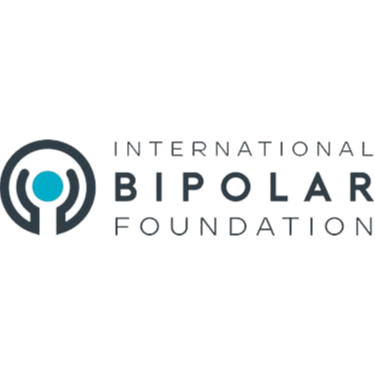As an academic coach for students with ADHD, most of my demographic is college-aged, and during this pandemic they have struggled mightily. I’m sure all of you reading this are nodding in agreement, whether you have a student going to college, or a student in high school — or you ARE a student doing online classes.
YOU MIGHT ALSO LIKE
CLEAR ALL
BY TEACHER
BY TYPE
FILTER

TOPIC
- Identity (21)
- Relationship Challenges (21)
- Emotional and Mental Health (20)
- Learning Styles (18)
- Transitions (17)
- Parenting (16)
- Synesthesia (16)
- BIPOC Well-Being (14)
- Anxiety (13)
- Communication Skills (13)
- Romantic Relationships (13)
- Child’s Autism (12)
- Self-Discovery (12)
- Disabled Well-Being (11)
- Growth Mindset (11)
- Work Challenges (10)
- Academic Struggles (9)
- Belonging (9)
- Depression (9)
- Imagination and Creativity (9)
- Relationship with Time (9)
- Self-Pressure (9)
- Child’s ADD/ADHD (8)
- Creative Well-Being (8)
- Failure (8)
- Friendship (8)
- Happiness (8)
- Self-Worth (8)
- Access to Education (7)
- Black Well-Being (7)
- Connection (7)
- Focus (7)
- Habits of Mind (7)
- Highly Sensitive People (7)
- Identity Shifts (7)
- Imposter Syndrome (7)
- Racism (7)
- Search for Purpose (7)
- Fellowship and Community (6)
- Self-Acceptance (6)
- Self-Esteem (6)
- Transgender Well-Being (6)
- Burnout (5)
- Discrimination (5)
- Finding Meaning (5)
- LGBTQIA Well-Being (5)
- Motivation (5)
- Racial Identity (5)
- Resilience (5)
- Self-Care (5)
- Women’s Well-Being (5)
- Asking for Help (4)
- Children’s Well-Being (4)
- Connection with Nature (4)
- Household Labor (4)
- Intimacy (4)
- Neuroscience (4)
- Nonbinary Well-Being (4)
- Social Responsibility (4)
- Work-Life Balance (4)
- Activism/Service (3)
- Aging (3)
- Athlete Well-Being (3)
- Authenticity (3)
- Child’s Challenging Behavior (3)
- Community Healing (3)
- Compassion (3)
- Confidence (3)
- Cross-Cultural Dynamics (3)
- Decision Making (3)
- Emotional Intelligence (EQ) (3)
- Gratitude (3)
- Honoring Emotion (3)
- Life Challenges (3)
- Living as an Empath (3)
- Mental Health Challenges (3)
- Mindfulness (3)
- Mindfulness Meditation (3)
- Perception (3)
- Personal Development (3)
- Physical Health (3)
- Pleasing Parents (3)
- Productivity (3)
- Racial Discrimination (3)
- Retirement (3)
- Self-Expression (3)
- Self-Limiting Beliefs (3)
- Sex (3)
- Shame (3)
- Social Justice (3)
- Social Presence (3)
- Speaking Your Truth (3)
- Stress (3)
- Stress Management (3)
- Unconscious Bias (3)
- Values (3)
- Veteran Well-Being (3)
- Child Defiance (2)
- Chronic Anxiety (2)
- Climate Change (2)
- Collaboration (2)
- Competition (2)
- Curiosity (2)
- Death or Loss of a Loved One (2)
- Diet and Nutrition (2)
- Digital Life (2)
- Empathy (2)
- Empowerment (2)
- Exercise (2)
- Family Acceptance (2)
- Family Dynamics (2)
- Forgiveness (2)
- Generosity (2)
- Healthy Eating (2)
- Immigration and Assimilation (2)
- Intention (2)
- Kindness (2)
- Latinx Well-Being (2)
- Leadership (2)
- Letting Go (2)
- Loneliness (2)
- Marriage (2)
- Meditation (2)
- Military to Civilian Re-entry (2)
- Neuroplasticity (2)
- New Relationships (2)
- Offering Support to Others (2)
- Othering (2)
- Peak Performance (2)
- Performance Anxiety (2)
- Personality Typing (2)
- Positive Thinking (2)
- Problem Solving (2)
- Racial Justice (2)
- Relationship with Money (2)
- Self-Actualization (2)
- Self-Compassion (2)
- Self-Healing (2)
- Self-Mastery (2)
- Self-Reliance (2)
- Setting Limits and Boundaries (2)
- Sleep (2)
- Spiritual Growth (2)
- Talk Therapy (2)
- Time Management (2)
- Trauma (2)
- Whiteness (2)
- AAPI Well-Being (1)
- Acceptance (1)
- Adaptability (1)
- Addiction (1)
- Boundary Confusion (1)
- Building Culture (1)
- Caregiver Well-Being (1)
- Challenges with Teens (1)
- Child Depression (1)
- Child’s Anxiety (1)
- Child’s Emotional Growth (1)
- Coming Out (1)
- Compassion Meditation (1)
- Consciousness (1)
- Criticism and Rejection (1)
- Cross-Cultural Parenting (1)
- Disconnection (1)
- Divorce and Breakup (1)
- Eating Disorders (1)
- Entrepreneurship (1)
- Female Friendship (1)
- Forest Bathing (1)
- Gender Discrimination (1)
- Gender Identity (1)
- Gender Justice (1)
- Goal Setting (1)
- Grief (1)
- Handling a Loved One’s Illness (1)
- Hero’s Journey (1)
- Homophobia (1)
- Illness and Injury (1)
- Indigenous Well-Being (1)
- Inner Peace (1)
- Inspiration (1)
- Integrative Medicine (1)
- Intuition (1)
- Job Loss (1)
- Journaling (1)
- Laughter Therapy (1)
- LGBTQIA Relationships (1)
- Longevity (1)
- Loss of Partner/Spouse (1)
- Lovingkindness Meditation (1)
- Memoir (1)
- Memory (1)
- Men’s Well-Being (1)
- Mind-Body Connection (1)
- Misophonia (1)
- Motherhood (1)
- Myers-Briggs Type Indicator (1)
- Neuropsychology (1)
- OCD (1)
- Optimism (1)
- Patience (1)
- Performance Pressure (1)
- Positive Self-Talk (1)
- Presence (1)
- Psychology (1)
- PTSD (1)
- Racial Healing (1)
- Rest (1)
- Self-Development (1)
- Self-Realization (1)
- Sexual Assault or Abuse (1)
- Shadow (1)
- Social Anxiety (1)
- Social Psychology (1)
- Soul Mission (1)
- Spirituality and Health (1)
- Storytelling (1)
- Suicide (1)
- Trust (1)
- Unfulfilled Career (1)
- Wake-Up Calls (1)
- Youth Activism (1)








